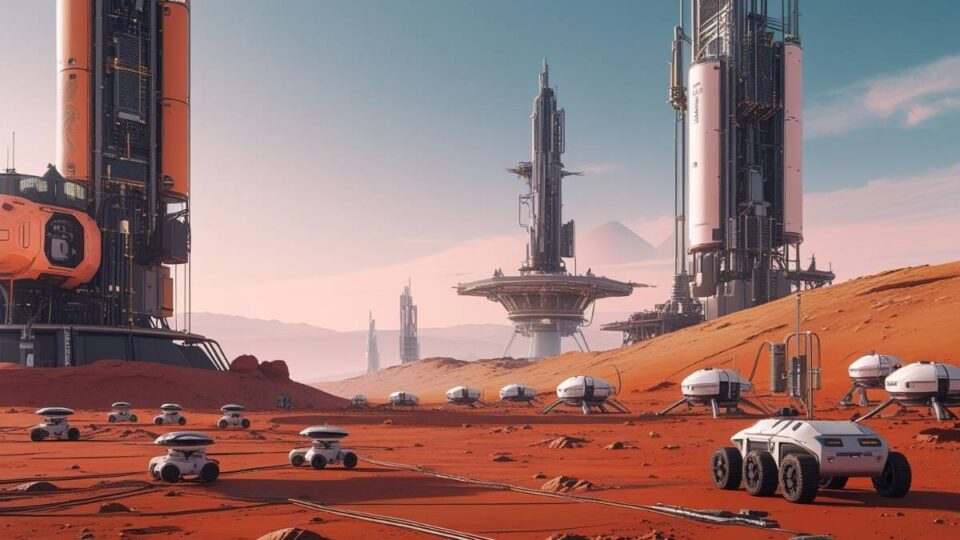Introduction
Mars has always been a symbol of human curiosity. It’s close enough to reach with rockets, yet so different from Earth that living there feels like a science fiction dream. The truth is, Mars is not naturally habitable—it has a thin atmosphere, freezing temperatures, and almost no breathable oxygen. To survive, we need a mix of two approaches: Adaptation Technology and Terraforming Mars to protect humans right away, and terraforming Mars to make the planet more Earth-like over time.
Together, these approaches—often described as adaptation technology terraforming Mars—could transform how we imagine life beyond Earth. Let’s break down how this works, what technologies are being developed, and what future Martian life might look like.
What Is Adaptation Technology in Space Exploration?
Adaptation technology is about helping humans survive in extreme environments. On Earth, we use things like thermal clothing in Antarctica or desalination systems in deserts. On Mars, adaptation becomes much more advanced:
- Protective habitats: Dome-like or underground bases that shield colonists from radiation.
- Smart exosuits: Space suits that regulate body temperature, oxygen, and mobility.
- Life-support systems: Closed-loop recycling for air, water, and waste.
- Hydroponic farms: Indoor farms that grow crops without soil.
Without adaptation technology, humans would not last long on Mars. But these solutions buy us time while scientists explore ways to terraform the planet.
Terraforming Mars: A Long-Term Vision
Terraforming is the process of reshaping a planet to make it more Earth-like. Scientists have suggested several methods for Mars:
- Releasing greenhouse gases to warm the surface.
- Using giant mirrors in orbit to reflect sunlight onto colder regions.
- Introducing algae or engineered plants to slowly produce oxygen.
These ideas sound exciting, but they would take centuries—or even millennia. That’s why adaptation technology terraforming Mars is seen as a two-phase plan: survive now with adaptation, and prepare for the future with terraforming.
Layers of Adaptation Before Terraforming Succeeds
Colonies on Mars will likely evolve in stages of adaptation before large-scale terraforming takes effect.
1. Living in Sealed Habitats
The first colonists will live in pressurized bases with thick walls made of Martian regolith (the planet’s soil) for insulation and radiation protection.
2. Farming with Technology
Greenhouses and hydroponic systems will allow colonists to grow food, supported by recycled water and artificial lighting.
3. Closed Ecosystems
Eventually, habitats will mimic Earth’s cycles, where plants, water, and waste are continuously recycled into usable resources.
Adaptation vs. Terraforming: A Side-by-Side View
| Approach | What It Means | Timeframe | Benefits | Drawbacks |
| Adaptation Technology | Protective suits, habitats, and recycling systems | Immediate to decades | Keeps humans alive quickly | High cost and maintenance |
| Terraforming Mars | Engineering the planet’s climate and atmosphere | Centuries to millennia | Long-term habitability | Unproven science, massive resources |
Both approaches are essential—adaptation ensures survival now, terraforming ensures a sustainable future.
The Big Challenges Ahead
Even with the best technologies, Mars colonization won’t be simple. Key challenges include:
- Radiation exposure: Mars lacks a magnetic field.
- Water extraction: Ice exists underground, but it’s hard to mine and purify.
- Psychological stress: Long isolation could affect mental health.
- Logistics and cost: Transporting supplies from Earth remains very expensive.
Each of these problems requires innovative adaptation solutions before terraforming becomes feasible.
Daily Life in a Future Mars Colony
Imagine yourself on Mars in the year 2080:
- You live in a dome-shaped habitat covered in regolith for radiation shielding.
- You eat vegetables grown in an indoor hydroponic garden powered by solar panels.
- Your water is recycled endlessly from showers and air moisture.
- You wear a smart suit outside that regulates your oxygen and body temperature.
This picture of everyday life shows how adaptation technology terraforming Mars could blend short-term survival with long-term planetary transformation.
Final Thoughts
The journey to make Mars habitable will not happen overnight. Adaptation technology will provide the first layer of survival, while terraforming will slowly reshape the planet for future generations. Together, these approaches could turn the Red Planet from a barren world into humanity’s second home.
FAQs
1. What is adaptation technology in space exploration?
It’s the use of protective habitats, suits, and recycling systems to help humans survive in harsh planetary environments.
2. How long would terraforming Mars take?
Experts estimate centuries or longer—it’s a long-term vision, not a quick fix.
3. Can humans live on Mars right now?
Not without technology. Mars’ thin atmosphere, radiation, and cold climate make it uninhabitable without protective systems.
4. What comes first—adaptation or terraforming?
Adaptation comes first to support colonists, while terraforming is a gradual process that follows.
5. Who is leading research on Mars colonization?
NASA and private companies like SpaceX are developing habitats, farming techniques, and transport systems (NASA Source).

